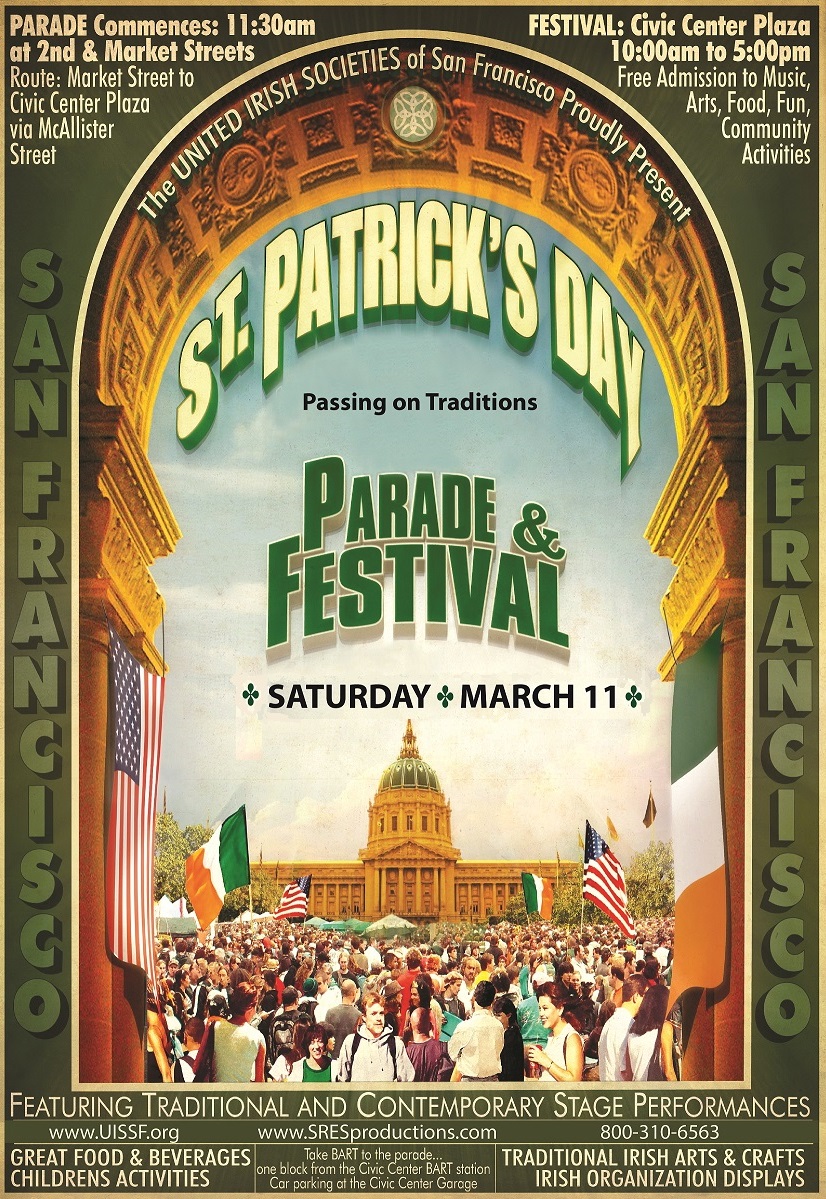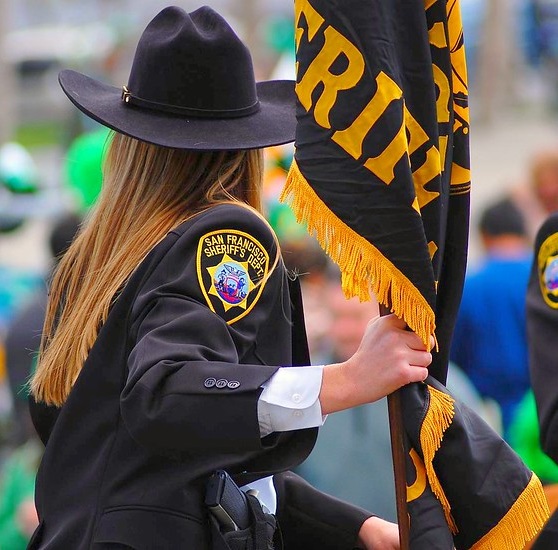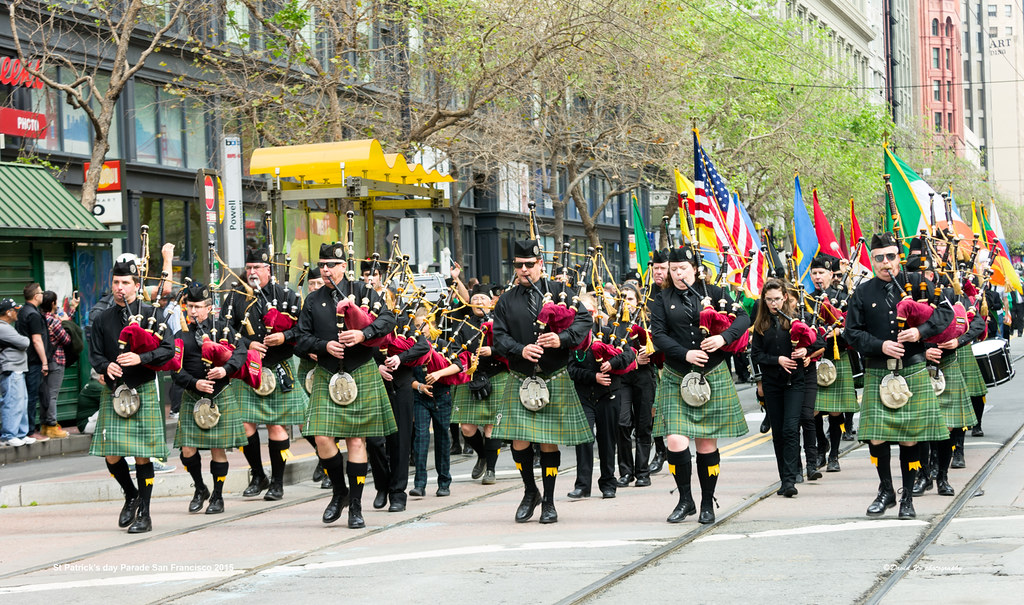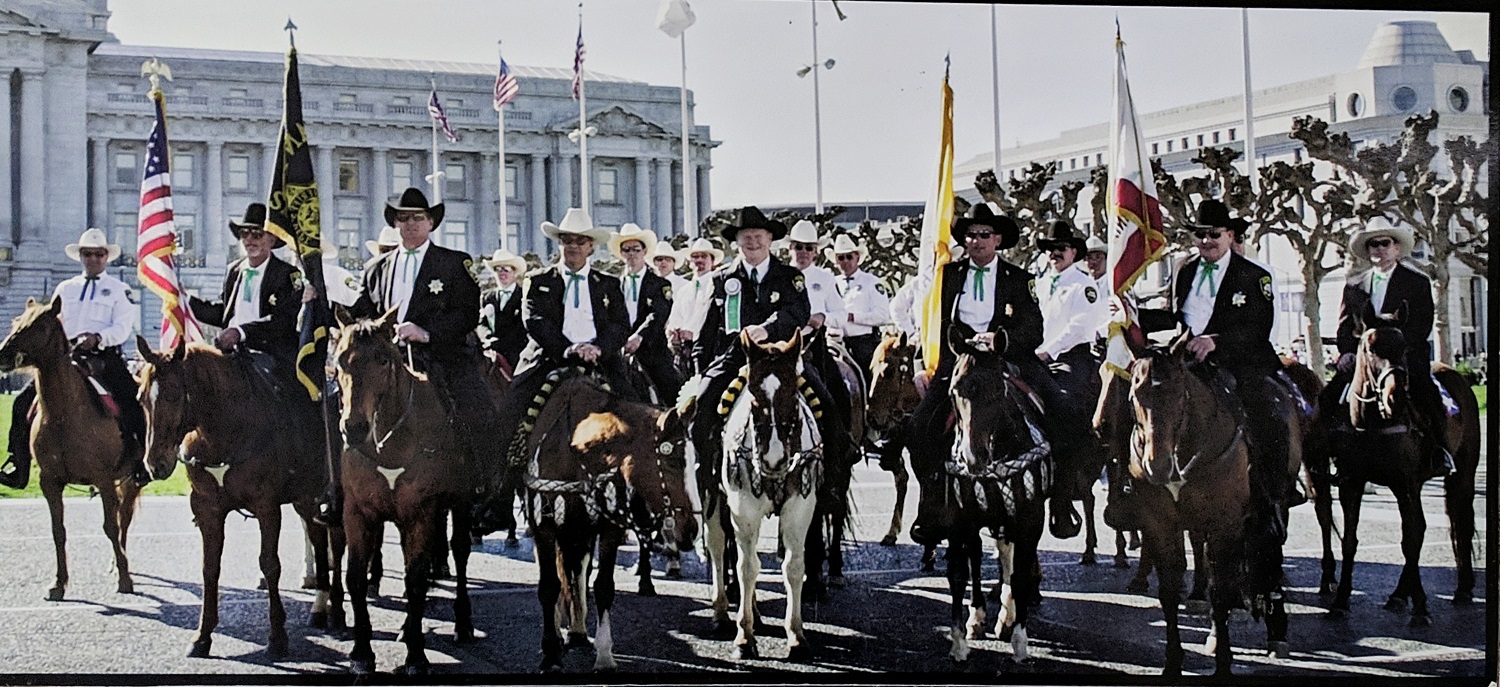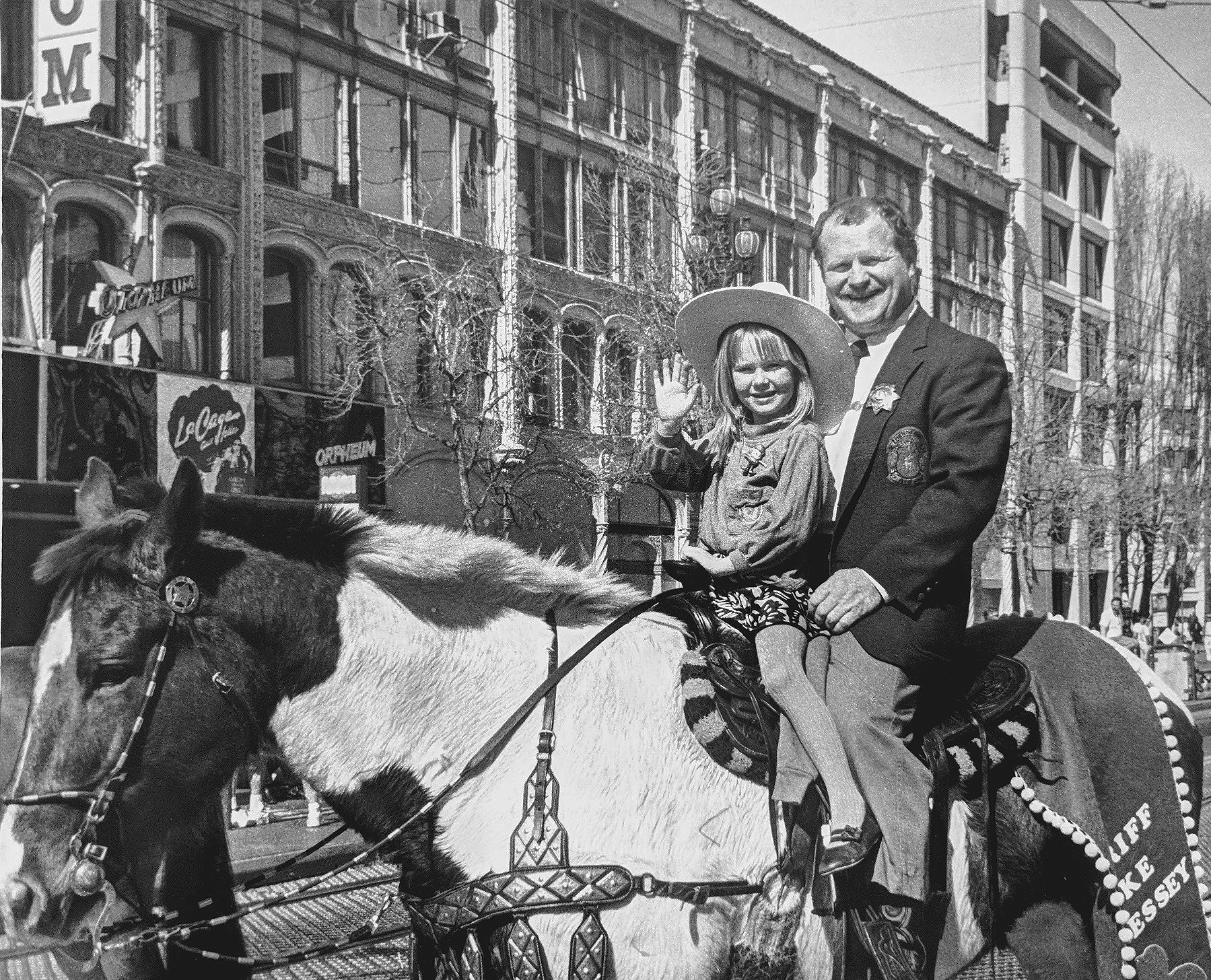St. Patrick’s Day in San Francisco was a pretty big deal. Maybe not as big a deal today with the City’s diversity blooming into being fifty percent Asian and Hispanic, but the upper ranks of police, fire and City management were still predominantly Irish when I became Sheriff. In fact, the weekly department head meetings looked like a St. Pat’s Day after-party: Police Chief Con Murphy, Fire Chief Emmet Condon, Public Defender Geoff Brown, Controller John Farrell, Treasurer Tom Scanlon, Parks Department Head Tom Malloy and on and on.
For politicians or politician wannabes, the week of St. Patrick’s Day was a busy one indeed. The Big Three events were the Parade, the Hibernian Newman Club Lunch and the Triple I Lunch. Then there was an array of other smaller opportunities to shake hands at the Democratic Clubs, at the raising of the Irish Flag on the Mayor’s balcony, the Cork Sister City party, the Irish Consulate reception, all the events at the Irish Cultural Center and making the rounds at San Francisco’s numerous Irish bars.
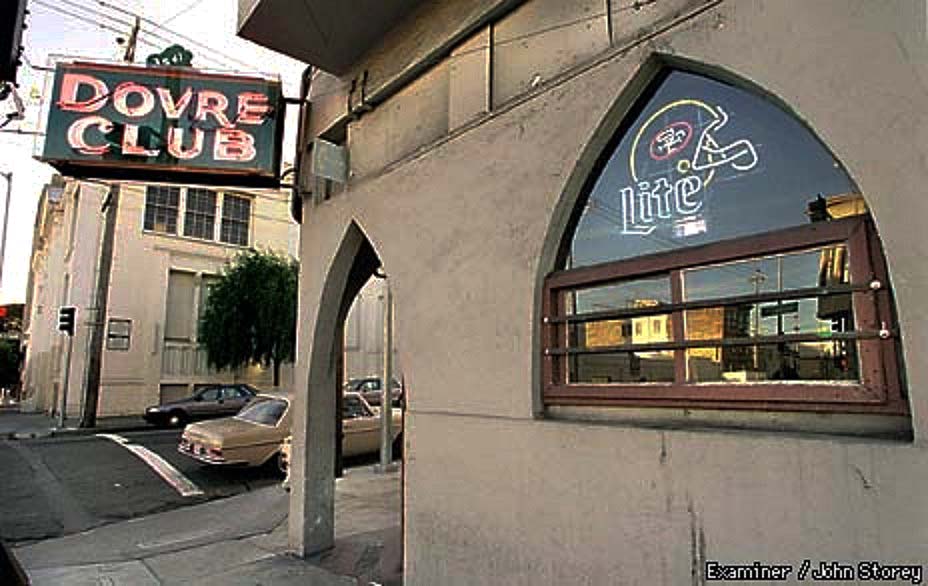
The Dovre Club opened on 18th Street in 1966 in a building known as the Norwegian Social Hall (today the Women's Building). The Irish bar quickly became a magnet for the City's power brokers, politicians and newspaper writers-- from political consultant Jack Davis, to columnist Warren Hinckle, porn czars the Mitchell brothers, and an array of elected officials. The Dovre Club moved to 1498 Valencia Street in 1998.
The annual Parade was held on the weekend before March 17th, usually on Sunday. The Sheriff’s Department had an auxiliary group called the Mounted Posse (later, after a schism, the Mounted Unit), which gave me the opportunity to ride a horse with a group of Western style riders. I much preferred to ride a horse in a parade rather than to travel in a convertible. There’s not much to do in a convertible other than wave inanely at people lining the parade route who mostly ignore your waving hand and stare blankly. When you are riding a horse, you have something to do. You have to pay some attention to controlling the horse and you can use that distraction to politely ignore the gawking crowd. You also get excited interests from children in the crowd who want to pet the horse, or have a photo taken next to the horse or to ask questions about the horse. The rider is a mere adornment.
I usually rode a retired polo horse, a brown and white paint. He was selected for me due to his very calm demeanor. It is not a good look for the Sheriff to fall off his horse. Along the parade route the kids would come up to the horse and ask, “What’s his name?” and I would reply, “Paint.” I didn’t dare tell them his real name was “Tortuga”, which means “turtle” in Spanish.
My rides in parades didn’t take much in the way of horsemanship, although there was always the chance for unexpected excitement. Riding on pavement with metal subway grates, across steel cable car rails and manhole covers of various styles meant you always had to be ready for the horse to slip and jolt. Popping balloons might frighten the horse, as might plastic bags fluttering in front of the horse on San Francisco’s notoriously windy streets.
I can thankfully say that I never fell off my horse during a parade and never had a runaway. One time I rode a steed that was trained to rear up like “Hi-Ho Silver.” I got the horse to rear right in front of the judges’ reviewing stand, but they just thought I had lost control. “Hang on there, Sheriff” said the announcer over the public loudspeaker.
Yeah, thanks.
On the scale of enjoyable parades, St. Patrick’s Day was not near the top. March is generally cold and windy. Rain was always a possibility. The parade route was mostly straight down Market Street, which has numerous slippery metal obstacles sunk in the road. Inevitably there would be two or three blocks at mid-Market where there were hardly any spectators other than the winos and junkies who lived in the various business doorways at night. Along those blocks it was not uncommon to be greeted with yelled comments about the food in the jail or grievances about deputies.
As the years went by, fewer and fewer horse riding groups came to parades in San Francisco. It was a long day, much of it filled with waiting. The Parade judges expected your group to be ready for judging before the parade and then all the horse units were put at the back of the parade -- a wise decision to minimize the marching units from stepping in, or having to constantly dodge, horse manure along the entire route. So, the horse units would get judged around 11 am and then wait around for two to three hours before joining the Parade.
Still, I preferred riding a horse over statically sitting in an open convertible. But if it had to be a convertible, it had to be the right convertible. One Sunday morning before the parade began, I was called by the group Captain to say that it wouldn’t be safe to ride a horse due to the likelihood of rain. He said he had a choice of two convertibles that I could use: a Rolls Royce or a Jaguar. I patiently explained that I couldn’t be seen in an Irish parade in a British car. Somehow, he found a Pontiac with a rumble seat which worked out just fine.
The most formal of the big St. Paddy’s Day events was the Hibernia Newman Lunch. This lunch was always held on St. Patrick’s Day unless the 17th fell on the weekend, in which case the lunch was on Friday. In other words, there was a 3 out of 7 chance that the event would be on a Friday. The Hibernian Newman Club is an Irish Catholic organization named after the popular Cardinal Newman. It sponsors a presence on college campuses to propagate the faith and to provide wholesome social opportunities. The lunch was always sold out, with hundreds of attendees, and was always held in one of the City’s more glamorous banquet rooms such as the Sheraton Palace.
Like most of these big events, there is a dais or raised speakers’ table at the head of the room for seating of dignitaries. As a general rule, if you were an elected City official, you got a seat at the dais. There was somewhat of a pecking order with the Archbishop, the Mayor and the day’s speaker at the center of the table, and lesser dignitaries fanned out to on either side depending on their perceived importance. Generally, I was comfortably seated at the far end of the dais. One time, however, I was more toward the center with one person seated between me and the spot reserved for Mayor Willie Brown. The Mayor was late as usual and the opening prayer was about to begin when Willie arrived to moderate applause. Once everyone was seated after the prayer, Willie leaned back and toward me and semi-whispered my name: “Hennessey, what’s this Hibernian thing?” I knew exactly what he needed. In about 3 sentences I explained the organization and said that the group had a Center at SF State where Willie had attended. End of conversation. When it came time for “Greetings” from the Mayor, Willie gave a 15-minute speech on the many contributions of the Hibernia Newman Centers at colleges across the country and how he wished he had something like that for him when he was in school.
Willie got a standing ovation, a political pro at work.
Generally, attendees were on their good behavior at this lunch. After all, the Archbishop was seated overlooking the crowd. Guests were greeted with applause; speakers were listened to attentively. Only twice in 30 years was a politician booed. The first was City Attorney Louise Renne, who at the time was holding the public land lease for the all-male Olympic Club golf course hostage because women could golf, but they could not become members. There must have been quite a few Olympic Club members in the audience that day. A few years later, Mayor Gavin Newsom was greeted with boos not long after he authorized gay marriage.
But who says Catholics can’t be flexible. St. Patrick’s Day falls during the religious observance of Lent, when eating meat on a Friday is frowned upon. On those days when the Hibernian lunch was on Friday, an announcement would be made before the serving of the corn beef that “The Archbishop has granted a dispensation regarding the eating of meat at today’s luncheon.” Even so, on those Fridays, the Archbishop left his corn beef untouched and so did many a watchful attendee.
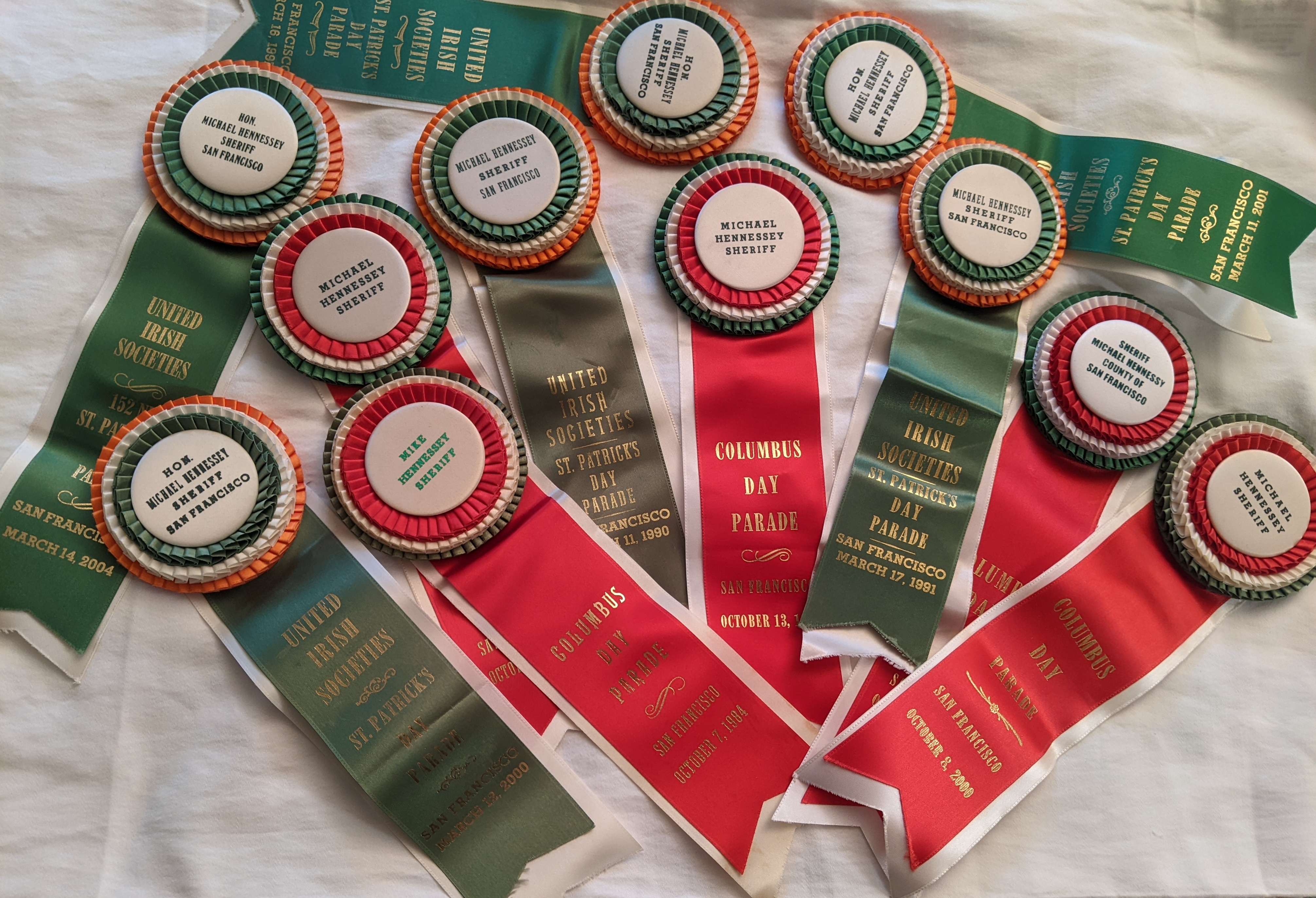
Various "Sheriff's" ribbons from many St. Patrick's Day and Columbus Day (now, thankfully, Indiginous Peoples' Day) Parades.
In San Francisco political circles there are all kinds of “clubs” or organizations that seem to exist merely for the purpose of people just getting together and for no other reason. Most in attendance seem to be older folks who use the organization as a chance to renew old acquaintances. As you can imagine, a lot of people who grew up in San Francisco now live in Marin, or San Mateo County or further out in the Bay Area. So, these gatherings are a good way to run into old San Francisco friends.
One of the ways I got acquainted with “old” San Francisco, and at the same time was able to do a little low-pressure campaigning, was to make the circuit of some of these groups. There was the first-Tuesday-of-every-month Moskowitz Luncheon Club (which died out when businessman Bill Moskowitz died); the monthly Calamari Club (where the unsuspecting invited speaker was repeatedly drowned out by shouted insults from the members); The Landsmen (a male only, tuxedo & cigar crowd that met once a year. I went once.); The St. Rose Spaghetti Feed (near Precita Park); the Golden Gate Breakfast Club (Ugh! It started at 7 am.); and a couple of others that I attended regularly.
These were all good places to be seen if you were running for election even though they were not political and did not endorse. They did, however, create a network of influence makers who passed judgment on local candidates.They also announced the presence of candidates and officials who attended the gatherings, which made it worth the long lunch hour or early breakfast. They were a particularly good place to be seen by a generally conservative, otherwise noninvolved, group of voters. Kind of like bingo game campaigning, but without the bingo.
One of my favorites was “The Triple I”. It is actually named The Italian-Irish-Israeli Society and seems to exist for no other reason than to meet up with a large lunch crowd the week of every St. Patrick’s and Columbus Day. The Israeli lunch event was a bit more sporadic, but was sometimes held near the anniversary of the founding of Israel (May 14th). The Triple I always has three co-chairs (Irish, Italian and Jewish) who serve pretty much until they die. If one dies, the other two select the replacement. A democracy it is not.
So, during the week of St. Patrick’s Day, a group of about two hundred attendees gather at the San Francisco Italian Athletic Club across from Washington Square and have a big chicken, pasta, green bagel and salad lunch. And, since there are two hundred possible voters in the room, it is a traditional stop for elected officials and political candidates. There is always a speaker of the day, often someone considered an “acceptable” politician. I was the speaker twice – once not long after I got elected when I learned the hard way that the crowd doesn’t stop talking just to hear the speaker.
Here’s my St. Patrick Day speech to the Triple I in March 2006. After the speech one of the old timer Democrats stopped me as I was leaving the hall and said, “I didn’t know you could be funny.”
I know that today is a day to celebrate all things Irish (and Italian and Israeli) and I would intend to share a few Irish moments with you. But first, I want to talk a little bit about my job.
It’s been my great honor to be San Francisco’s Sheriff for these past 26 years. It has also been a great education. Running the jails and working with a bunch of characters has taught me a lot of lessons.
For example, from former Chief of Police Con Murphy I learned: that you have to clean up your own mess. I had been Sheriff only 3 months when the biggest jailbreak in the history of San Francisco took place. Inmates in our high security jail somehow smuggled in a loaded gun and took over the jail early one Sunday morning when staffing was the lowest. I got the call from a hyperventilating deputy around 4 am and rushed down to the Hall of Justice which was crawling with police officers and deputy sheriffs, looking for anyone who had escaped. A bunch of the inmates were captured still in the Hall, but 13 others managed to get free.
After finding out what I could from my deputies, I met Chief Murphy in the lobby of the Hall. We compared notes and talked about what to do next. As we were talking, a police officer came up to the Chief and said, “Chief - the reporters are all on the front steps and they want a statement of what’s going on.” I looked at Murphy and said, “Well, Chief, I’d guess we’d better go out there and face the music.” Chief Murphy got an Irish grin on his face and as he got ready to walk away, he said to me: “They’re your jails, kid.” I went out alone.
I have also learned: that when the Big Boss wants something done, it gets done. You might remember a buffalo herd that used to live out in Golden Gate Park. Oh, I know there’s a bunch out there now, but they aren’t the same ones that were out there before Dianne Feinstein became Mayor. After the original buffalo became sick, which was noted by the Mayor when she jogged in Golden Gate Park, the Mayor’s husband, Richard Blume, bought a replacement herd for the City. Mayor Feinstein simply told the Parks Department to find a place to put the old herd to make room for the newly purchased herd. Which is how they ended up on the grounds of the San Francisco County Jail at San Bruno, where they roam today.
Of course, I’m not the first Sheriff of San Francisco to have roots in Ireland. Several of the City’s first sheriffs were actually born in Ireland. One sheriff in 1872, Sheriff James Adams, was born in Belfast and during his term as sheriff had the distinction of hanging from the neck until dead a notorious criminal, born in Waterford, named Johnny Devine, also known as The Shanghai Chicken.
The hanging took place only a few blocks from here at the Broadway Jail, on Broadway near Kearny. The Irish saw both ends of the rope on that day.
A few years after this hanging, a young San Francisco deputy sheriff quit his job to sail to Australia on an improbable mission to help six Irish patriots escape from a British prison. The entire journey took almost a year and a half, with all parties eventually sailing into New York harbor to an Irish heroes’ welcome. That deputy sheriff, Tom Desmond, born in Cork, worked his way back to San Francisco and was elected Sheriff of San Francisco barely three years later.
Another good Irishman, Thomas O’Neil had been Sheriff for only three months when the Great Earthquake of 1906 struck. Within 24 hours, the Broadway Jail and the Hall of Justice jail were in flames.
Sheriff O’Neil and a group of soldiers first marched more than 150 prisoners to Fort Mason, and then ferried them to San Quentin-- where they were refused admittance-- and then Alcatraz, where they stayed for a few days, and finally to the Alameda County Jail. They made it back to San Francisco a month later to occupy the old Ingleside Jail, then located on the site of what is now City College.
In fact, during the past one hundred years, San Francisco has only had twelve different sheriffs and eight of them have been of Irish descent: Thomas O’Neil, Lawrence Dolan, Tom Finn, William Fitzgerald, Dan Murphy, Dan Gallagher and Matt Carberry.
Of course, one has to be a little bit leery of reading lists of Irish luminaries in this crowd. I remember a few years ago when the day’s speaker read a list of all of the Irish Archbishops that had served in San Francisco. And an impressive list it was. After he spoke, some Italian partisan, I think it was Len Steffinelli, thanked the speaker for the dramatic reading and invited him back next year to read a list of all of the Irish Popes. (But, you know, Len: The Italians haven’t been doing so good in the Pope business lately, either.)
As a kid, I grew up “sort of” Irish. I say “sort of” because my parents were born in the United States, even if their parents were born in Ireland. I grew up in Iowa farm country, in a town of a thousand people, where a third of the town was Irish Catholic, a third German Lutheran and a third Scandinavian Presbyterian.
As a child, about the only tie to Ireland that I recall is wearing green to school on St. Patrick’s Day and getting to pinch anyone who wore Orange. We weren’t really sure why we were supposed to pinch the kids wearing orange, but we did it anyway. It’s really only since I moved to San Francisco that I began to learn more about my Irish heritage. San Francisco has such a wonderful Irish community with such close ties to Ireland, that it’s hard not to get interested if you’re even a little bit Irish.
And then, a four years ago, my 14-year-old daughter and I made a trip to Ireland, largely so we could drive to the south, on the wrong side of the road, to a town called Clonmel just barely inside the Tipperary County line. Outside of Clonmel is the remains of an abandoned stone church with no roof which has been turned into a graveyard.
There we found a carved tombstone dedicated to my great-grandfather and his wife. It was while staring at the tombstone that I first learned that my Great-grandfather’s name was Michael Hennessey.
A journey like that one reminded me of the richness of my family’s history, something that we all cherish and something that we probably should pay more attention to, whether we are Irish, or Italian, or Jewish, or Asian. Or just think of our heritage as San Franciscan.
Our trip to Ireland was magical in so many ways. I recommend it to everyone here. Go visit your Irish roots, even if you aren’t Irish. You’ll love the country and the people.
Thank you for having me here today, and I hope I will see you this Sunday at that great celebration of the Irish, the St. Patrick’s Day Parade. I’ll be there.
I’ll be the guy on the horse.
